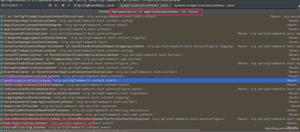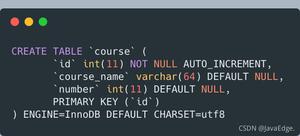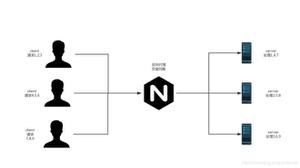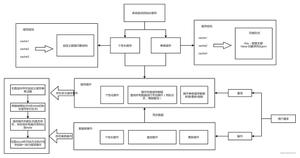Spring实战之清除缓存操作示例
本文实例讲述了Spring实战之清除缓存操作。分享给大家供大家参考,具体如下:
一 配置文件
<?xml version="1.0" encoding="GBK"?>
<beans xmlns="http://www.springframework.org/schema/beans"
xmlns:xsi="http://www.w3.org/2001/XMLSchema-instance"
xmlns:p="http://www.springframework.org/schema/p"
xmlns:cache="http://www.springframework.org/schema/cache"
xmlns:context="http://www.springframework.org/schema/context"
xsi:schemaLocation="http://www.springframework.org/schema/beans
http://www.springframework.org/schema/beans/spring-beans-4.0.xsd
http://www.springframework.org/schema/cache
http://www.springframework.org/schema/cache/spring-cache-4.0.xsd
http://www.springframework.org/schema/context
http://www.springframework.org/schema/context/spring-context-4.0.xsd">
<context:component-scan
base-package="org.crazyit.app.service" />
<cache:annotation-driven
cache-manager="cacheManager" />
<!-- 配置EhCache的CacheManager 通过configLocation指定ehcache.xml文件的位置 -->
<bean id="ehCacheManager"
class="org.springframework.cache.ehcache.EhCacheManagerFactoryBean"
p:configLocation="classpath:ehcache.xml" p:shared="false" />
<!-- 配置基于EhCache的缓存管理器 并将EhCache的CacheManager注入该缓存管理器Bean -->
<bean id="cacheManager"
class="org.springframework.cache.ehcache.EhCacheCacheManager"
p:cacheManager-ref="ehCacheManager">
</bean>
</beans>
二 属性文件
<?xml version="1.0" encoding="gbk"?>
<ehcache>
<diskStore path="java.io.tmpdir" />
<!-- 配置默认的缓存区 -->
<defaultCache
maxElementsInMemory="10000"
eternal="false"
timeToIdleSeconds="120"
timeToLiveSeconds="120"
maxElementsOnDisk="10000000"
diskExpiryThreadIntervalSeconds="120"
memoryStoreEvictionPolicy="LRU"/>
<!-- 配置名为users的缓存区 -->
<cache name="users"
maxElementsInMemory="10000"
eternal="false"
overflowToDisk="true"
timeToIdleSeconds="300"
timeToLiveSeconds="600" />
</ehcache>
三 领域模型
package org.crazyit.app.domain;
public class User
{
private String name;
private int age;
public User()
{}
public User(String name, int age)
{
super();
this.name = name;
this.age = age;
}
public String getName()
{
return name;
}
public void setName(String name)
{
this.name = name;
}
public int getAge()
{
return age;
}
public void setAge(int age)
{
this.age = age;
}
}
四 Service
1 接口类
package org.crazyit.app.service;
import org.crazyit.app.domain.User;
public interface UserService
{
User getUsersByNameAndAge(String name, int age);
User getAnotherUser(String name, int age);
}
2 实现类
package org.crazyit.app.service.impl;
import org.crazyit.app.service.UserService;
import org.crazyit.app.domain.User;
import org.springframework.stereotype.Service;
import org.springframework.cache.annotation.Cacheable;
import org.springframework.cache.annotation.CacheEvict;
import org.springframework.context.annotation.Scope;
@Service("userService")
@Cacheable(value = "users")
public class UserServiceImpl implements UserService
{
public User getUsersByNameAndAge(String name, int age)
{
System.out.println("--正在执行findUsersByNameAndAge()查询方法--");
return new User(name, age);
}
public User getAnotherUser(String name, int age)
{
System.out.println("--正在执行findAnotherUser()查询方法--");
return new User(name, age);
}
// 指定根据name、age参数清除缓存
@CacheEvict(value = "users")
public void evictUser(String name, int age)
{
System.out.println("--正在清空"+ name
+ " , " + age + "对应的缓存--");
}
// 指定清除user缓存区所有缓存数据
@CacheEvict(value = "users" , allEntries=true)
public void evictAll()
{
System.out.println("--正在清空整个缓存--");
}
}
五 测试类
package lee;
import org.crazyit.app.service.UserService;
import org.crazyit.app.domain.User;
import org.springframework.context.ApplicationContext;
import org.springframework.context.support.ClassPathXmlApplicationContext;
public class SpringTest
{
public static void main(String[] args)
{
ApplicationContext ctx =
new ClassPathXmlApplicationContext("beans.xml");
UserService us = ctx.getBean("userService" , UserService.class);
// 调用us对象的2个带缓存的方法,系统会缓存两个方法返回的数据
User u1 = us.getUsersByNameAndAge("孙悟空", 500);
User u2 = us.getAnotherUser("猪八戒", 400);
//调用evictUser()方法清除缓存中指定的数据
us.evictUser("猪八戒", 400);
// 由于前面根据"猪八戒", 400缓存的数据已经被清除了,
// 因此下面代码会重新执行,方法返回的数据将被再次缓存。
User u3 = us.getAnotherUser("猪八戒", 400); // ①
System.out.println(u2 == u3); // 输出false
// 由于前面前面已经缓存了参数为"孙悟空", 500的数据,
// 因此下面代码不会重新执行,直接利用缓存中的数据。
User u4 = us.getAnotherUser("孙悟空", 500); // ②
System.out.println(u1 == u4); // 输出true
// 清空整个缓存。
us.evictAll();
// 由于整个缓存都已经被清空,因此下面两行代码都会重新执行
User u5 = us.getAnotherUser("孙悟空", 500);
User u6 = us.getAnotherUser("猪八戒", 400);
System.out.println(u1 == u5); // 输出false
System.out.println(u3 == u6); // 输出false
}
}
六 测试结果
--正在执行findUsersByNameAndAge()查询方法--
--正在执行findAnotherUser()查询方法--
--正在清空猪八戒 , 400对应的缓存--
--正在执行findAnotherUser()查询方法--
false
true
--正在清空整个缓存--
--正在执行findAnotherUser()查询方法--
--正在执行findAnotherUser()查询方法--
false
false
更多关于java相关内容感兴趣的读者可查看本站专题:《Spring框架入门与进阶教程》、《Java数据结构与算法教程》、《Java操作DOM节点技巧总结》、《Java文件与目录操作技巧汇总》和《Java缓存操作技巧汇总》
希望本文所述对大家java程序设计有所帮助。
以上是 Spring实战之清除缓存操作示例 的全部内容, 来源链接: utcz.com/z/312196.html








